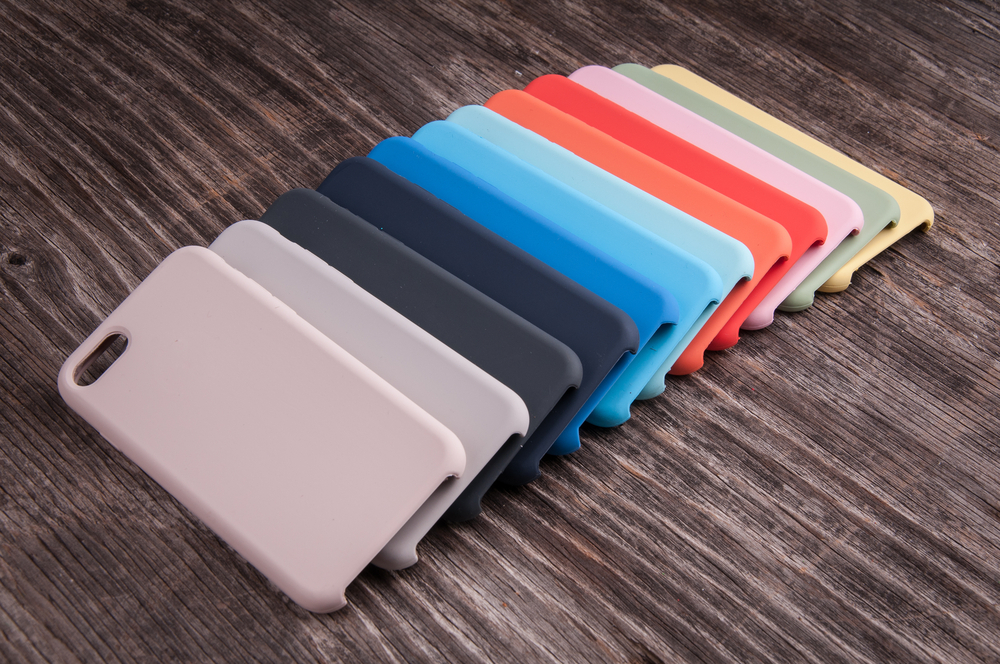Since smartphones have become more and more expensive and more fragile, due to some features requiring glass backs, case manufacturers also grew in number and offer tens of models for hundreds of phones at a time, in some cases.
Depending on the material they are made from, cases have different prices, different levels of protection and also, different grades of durability. This means that some case models have a longer lifespan than others and are, thus, less likely to become waste.
Some of the more common case materials include plastic, silicone, rubber, leather and metal. Plastic cases, for example, are great for their low price, good durability and lightweight properties, while gel / silicone cases provide great shock absorption.
How to recycle smartphone cases
Unfortunately, due to the materials they are made from, cases can't be recycled collectively and need to be handled by specialized companies. Some phone makers out there might be able to collect your old case in special containers located in their stores and send them to recycling companies.
The first step before sending your case for recycling is to find an alternative use for it. For example, if you have a friend or family member with the same phone model as you, you can give them your old case, if it's in good condition, extending its overall lifespan.

When you decide that the case's days are numbered and want to breathe new life in it, find the suitable company that can do that for you. In Romania, Vetter is one of the specialized phone accessory manufacturers that collects cases and sends them in for recycling.
Internationally, Casetify is a company that will offer you 15% off a new case if you choose to mail them your old model. TerraCycle is a company that recycles phone accessories, among other things and they might be the solution you're looking for, if you can send them your old case.
How are smartphone cases recycled
Depending on the material they are made from, cases are easier or more difficult to recycle. Leather cases, for example, can't be recycled as easily as other type of cases, in the sense that the material can't be repurposed for making other cases. Best case scenario for these cases, the leather can be scrapped and used to manufacture smaller accessories or products.
On the other hand, plastic or rubber cases, for example, can be processed down to make new models or other products from the resulted material.
We covered how these materials are being recycled in dedicated "How it's recycled" articles.
Generally speaking, for hard plastic cases, they are separated from the other types of cases and shredded to small pieces. Then, any possible contaminants, such as rubber or metal, are filtered out, leaving just the plastic, which is melted and then reused for manufacturing new cases or other products. Cases manufactured from recycled plastic are advertised accordingly and their quality shouldn't vary too much compared to cases made from virgin materials, except their footprint is significantly lower.
Rubber cases are another type of popular case that are recycled separately from their plastic counterparts and are usually shredded into small granules, which are used to manufacture new cases or rubber mats, for example. Alternatively, rubber can be melted and used to create fuel oil, although this way, the carbon footprint is increased.
Rarely, phone cases can be made of or contain large amounts of metal, which can be recycled fairly easily. Just like in the case of plastic, metal cases are shredded and melted and the resulted prime matter can be applied into moulds to create new cases or metal products with a lower carbon footprint.

Wooden cases, fairly rare among users, can be recycled as other types of wood products, with the mention that these are usually made of treated wood, thus, they aren't necessarily suitable for manufacturing furniture. Also, due to their small size, wood-made cases can be suitable mostly for shredding and integration in board panels or be used straight as biomass.
How to prolong the lifespan of smartphone cases
The best way to extend the lifespan of your phone's case is by not upgrading your phone in the first place. Nowadays, from one generation to another, smartphone makers change the shape, size and button placement ever so slightly, so that you need to swap your case, as well. By sticking with your existing phone, you keep using the case you already have, as well as extending the phone's life itself, which brings even more benefits.
When choosing a phone case, try to buy a quality one without necessarily buying from expensive brands. Hard plastic cases are usually very durable, with clear cases suffering from yellowing, which might sway you from using them long-term. Leather cases, while durable, they are made from prime matter coming from animals, which works against the environment.
If you own any of Apple's iPhone 15 models, do not buy the FineWoven case, as it has been reported as very fragile, which means that you're likely to just throw it away shortly after the purchase. Additionally, the FineWoven material is fairly unconventional and recycling it might be difficult, despite the case itself being made from 68% post-consumer recycled content.
Also, when swapping phones, check if any of your friends or family have your phone model and give them your old case to protect their device or change their style, if they so desire.
 Mihai - Cristian Ioniță
Mihai - Cristian Ioniță












Any thoughts?